I have decided to do some research and write this article on how to improve musicality in dance, as a couple of my pupils had issues with their musicality in dance in their recent exams. Most of it I know is due to nerves, but I am sure many of you would like to know how to improve your own musicality in dance.
The art of dance is built or choreographed on or to music. So in order to understand dance, you need to understand the basics of dance musicality.
This post may contain affiliate links.
The Basics – Understanding Your Music

In most cases, we use an 8-count to break down the structure of the music in dancing.
For example, if a choreographer says that a move executes on “the 5,” you’re going to count into the music: “One, two, three, four, MOVE.“
The counts in-between – “and” counts – are used to mark 16 counts. “one and two and three and four.”
To split each count into 4’s some choreographers add an ‘e and’ or an ‘and and.’ So they would count ‘one e and a or one and and a,’ which now splits each count into 4s.
This is normally done with more advanced choreography.
Dancers need to use all their music when dancing. Often they don’t use it enough. They need to feel those extensions through the music.
Sometimes the dancers don’t travel enough or don’t take big enough steps to fill out the music. You can correct this by getting them to chase each other while dancing across the floor. Remind them that they are making their steps bigger by pushing off of the supporting leg.
Use imagery and remember to work on the introductions and endings to show more depth.
Which Dance Forms Are Great To Improve Musicality?
Hip Hop, Tap, and Spanish Dancing are three genres that work on a dancer’s musicality all the time.
What About The Sounds?
So now that you are getting the gist of the timing, let’s listen to exactly what is going on in all those counts by giving the sounds a name.
We are just going through the basics here so you don’t get overwhelmed.
Lyrics
- The words that the singer is singing, are also referred to as the melody.
- The lyrics are probably the easiest to distinguish, but hardest to count or dance to, since vocals don’t always match the strict structure of 8-counts or even the music playing in the background.
- Sometimes, choreographers will make moves that correlate with the lyrics, like miming actions or using certain body parts which also help the dancer.
Bass
- The bass is the lowest of the standard four voice ranges (bass, tenor, alto, soprano), or, the lowest melodic line in a musical composition, that supports the harmony.
- Different instruments can produce a bass sound (drums, guitar, etc…..)
- Dancers, especially hip-hop dancers, often use the onomatopoeia “boom” to describe a bass drum.
Snare
- It’s the sharp, staccato sound you hear, like the sound you make when you snap a rubber band.
Hi-Hat
- A hi-hat is produced by a cymbal.
- Dancers often describe this sound as “tss tss,” because that is what it sounds like.
Synth
- These are the electric signals that are converted to sound through amps and loudspeakers.
- It can often sound similar to a long slow base (“wobba wobba”).
Strings
- Guitar strums and melodies are also useful to take note of for more instrumental/acoustic songs.
Keyboard/Piano
- The piano sounds will also accent or set the melody or the harmony of the song.
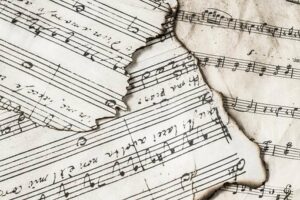
By listening to a piece of music carefully, you’ll discover different combinations of different sounds in layers. Try to get into the habit of dissecting the music you are dancing to so that you can name the different sounds as per the guide above. You will start to see patterns in the music as you study the song and you will learn to hear the highs and lows.
So What Is Musicality?
Musicality in dance is how a dancer expresses music in his or her body.
Dance musicality is how we hear, interpret, and dance to music.
If you want to know how to improve musicality in dance you must know that “Musicality is understanding music on a technical level, and then dropping all of that knowledge so you can sit deep inside the music,” “It’s dancing inside the music, as opposed to floating on top of it.” says choreographer Wade Robson.
Being on the music means that you reach the correct position on the appropriate count. Being late or being behind the music means that you are not on time with the music. Being musical isn’t about just being on time with the music, it is also the ability to hear subtle qualities and nuances within the music, like the elements above, and then communicate it through your dancing.
If you are musical, you are enjoyable to watch. Dancers with absolutely no musicality are often stiff or seem disconnected when they dance. They are also unable to show emotion in their work.
There is an essential connection between music and dance.
“Music begins to atrophy when it departs too far from the dance.” – Ezra Pound
“A strong but non-musical dancer is like a painting without any colors. I’d rather watch a musical dancer with less extension and not-as-pretty feet.” – Feijoo
“If you are familiar with the different sounds that make up a song, then you’ll know how to execute moves to better portray those sounds.”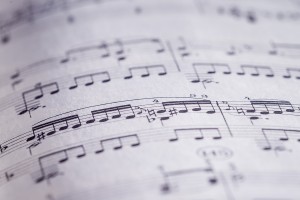
How To Improve Musicality In Dance
Dancers, be careful of taking your music for granted or using it merely as a means of keeping time. Next time really listen to it and see if it inspires or motivates you in any way. What does the music make you feel? These are the things that develop artistry and help you to become a better dancer.
Try to make out the personality of the music. If it is loud and bold, make your movements bold and big. If soft and twinkly, be delicate and light.
It is a proven fact that playing classical music to babies is very beneficial. The earlier children are exposed to music, the better. Musical training and learning to read music can help you tremendously as a dancer. Dancers who play a musical instrument will also have a greater sensitivity to the music.
At a minimum try and listen to music often to try and improve your musicality in dance. When you listen to music, train yourself to identify the rhythm and allow your foot to tap in time to the beat of the music. Clap the rhythm. Try to listen to different types of music, even music you don’t like and trickier syncopated and jazz music, as it will give your ear a different training. Don’t get too used to one type of music.
Musicality helps to solve problems in dance too. If you are battling to turn, for example, listen to the rhythm and accent of the music. You may improve your turn simply by changing the rhythm or accent. If you work on how to improve your musicality in dance, your dancing can only improve. Music can inspire you to get through a long and tough dance exercise, and when you run out of energy, simply ride the music and let it give you the energy to carry on.
Some dancers can hear the music, and for those who can’t, learn to count your music. In a group dance, it is essential to count as it gets everyone moving in unison. Some music, on the other hand, is extremely difficult to count and the dancer has to learn to listen to nuances, highs, and lows in the music in order to dance in time.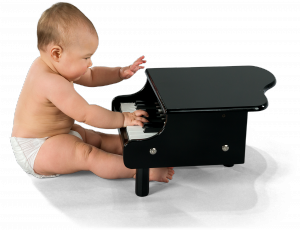
Have music discussions in your class. You have probably heard of ‘phrasing,’ but do you know what it is? Phrasing is the way the music is organized within its measures. In dancing choreographic phrasing is similar, as steps are organized within a musical phrase. For instance – which steps move through the music, which steps are syncopated, and which are on the beat. The musical phrasing tells choreographers when a step should move quickly and when it should be stretched out.
A dancer needs a great sense of rhythm to hold the audience’s attention. Each dancer can also do the same piece but it will look totally different as each dancer will have her own unique way of interpreting the music.
Musical Exercises For Dancers:
This one will definitely help you improve your musicality in dance.
First, find a song that you really like and listen to it as you normally would. Try and identify the different musical instruments used in the piece.
Now play it again, but listen only to the drum. Try to block out every other sound and follow only the drum through the entire piece. Ask yourself if the drum changes or stays the same throughout the entire piece.
Now play the song a third time and focus on another instrument like a keyboard.
Repeat this exercise until you have followed each instrument in the song or piece.
Even if you must listen to it ten times or more to go through all the instruments. Now listen to it normally again. This will help a lot with your dancing, and you should be able to dance to rhythms you have never even thought to listen to. This is an excellent exercise for all dancers to do.
After all, dancing is the joy of making music with your body.
Here is a book that will help you with your musicality. Click on the picture to find out more about it.
This book will help you with these aspects of musicality:
- Dancing to the Beat
- Dancing to Different Tempos
- Finding the Dominant Feeling
- Expressing Specific Sounds
- Dancing to the Silence
- Prediction & Preparation
- Dancing to the Vocals
- Breathing with Musicality
- Putting it all Together
As an extra guide to dance teachers who are battling to get their younger students to understand musicality here are some more ideas:
Let Them Feel The Music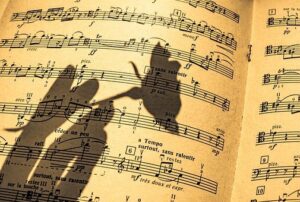
Put some age-appropriate music on and allow them to just dance. Give them props and if they are not responding you can give them verbal prompts like dance small, tall, fast, slow, etc. Let them discover their own freedom within the music.
Try To Match Your Music To Your Steps
Make sure to use music that matches the dynamics of the movements that you are performing.
It’s great to use music with various changing elements, so you can tell them when you hear the music stomp, stomp, and when you hear the music go high we dance on our tiptoes, and if the music twirls, we twirl.
This sort of exercise will train their ears to hear the music shift and learn to immediately change their focus to another step.
Listen For The Beat
Let them sit on the floor and simply clap to the beat. Then let them stand and stomp to the beat.
Try tapping various parts of their bodies in time with the beat of the music. This exercise encourages them to let the beat find its way into their bodies.
Try Choreography in Phrases
Don’t expect your little ones to remember an actual dance in time to the music, as this only starts to happen from the age of 5 or 6.
Rather choreograph in phrases. So instead of making them do eight marches, let them march until the end of that phrase of music or a part of the music that tells them marching time is over. So in order to do this, you need to make sure you choose music that has distinct phrasing.
Practice Stopping At Count 8
Let them practice a step in sequence a certain amount of times and then stop. The goal is to have everyone stop together. Talk about how dancing in unison looks so much better so the dance doesn’t look sloppy.
Choose Music That Works With Their Bodies
When they are ready to dance to the beat, choose music that matches their natural rhythms. If you choose marching music that is too slow for example, they will march faster than the music which defeats the purpose. Find a good rhythm that suits their pace of marching.
Use Your Introductions
Insist that your students wait for the introduction before they begin to dance. Let them know when the introduction is over and when they need to start dancing. Try listening to different pieces of music so your pupils can identify different introductions.
This will train them well for not to rush into the music in the future when they are nervous and have to dance in public.
I trust that the above information has helped you with your question about how to improve musicality in dance.
Please feel free to comment below if you have any other ideas on musicality in dance.

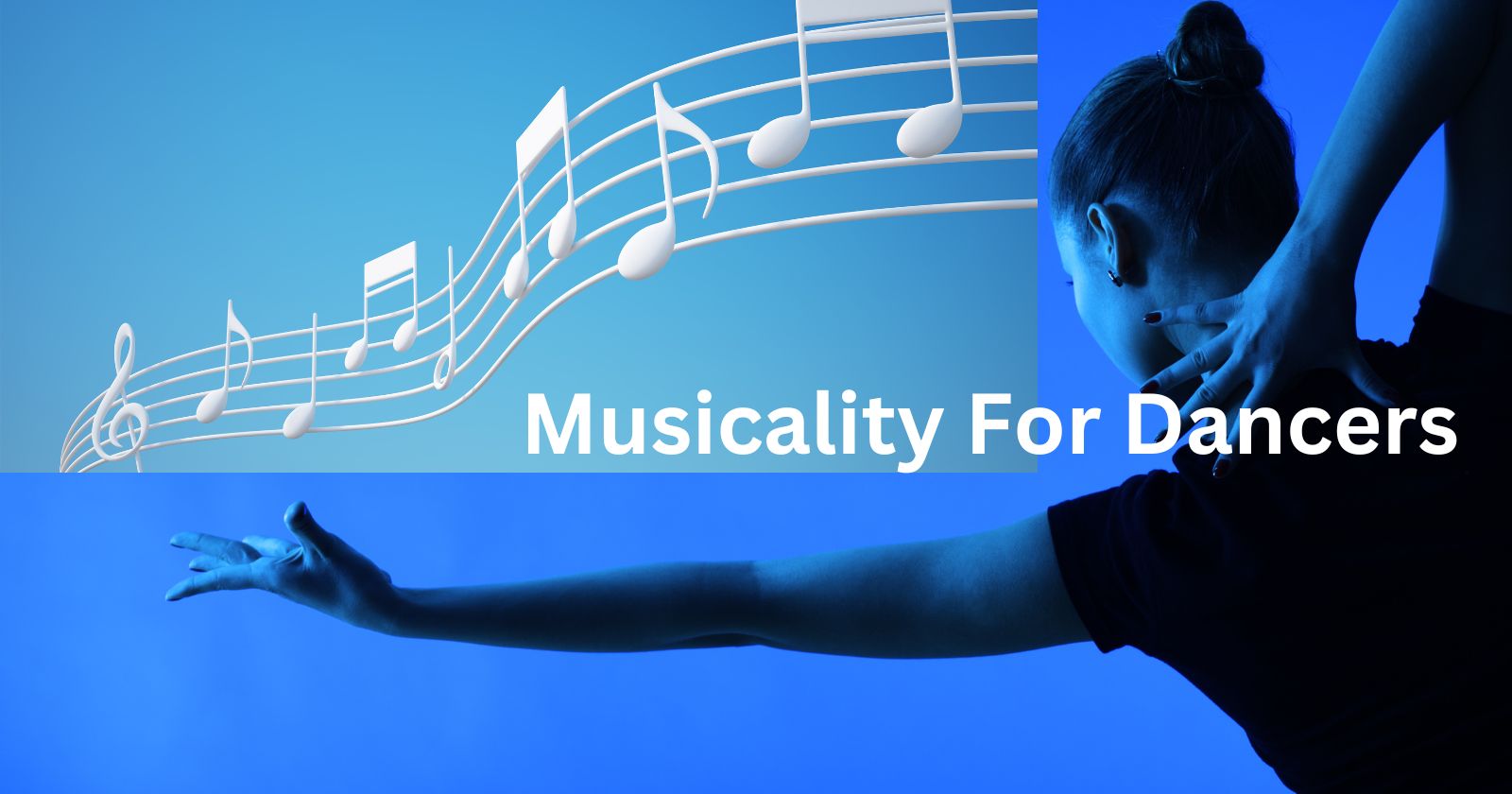
Hi There
I am not a professional dancer but I would like to say that I love dancing.
Given that , I know understand from your article, the concept of musicality in dance.
It feels completely different when you are in rhythm with a song when you are dancing as opposed to when you dance just for the sake of it.
I like your lesson about dissecting a song by listening to each instrument and then going back to focus on another instrument.
It is sort of getting your body and mind more comfortable and accustomed to the song so that dancing to it will become second nature. You will be more open to doing routines and grooving along. Am I understanding it correctly?
Lovely article by the way
Take Care
Roopesh
Thanks Roopesh. Musicality is quite a complex thing to explain but you did it well.
Hi Michel. As I went through your article I felt like remembering something, but I wasn’t sure what it was. Suddenly it struck me. The way you explain Musicality sounds exactly the same as when I try to explain the way I feel while in meditation. It’s like being without being. You just let yourself immerse in the moment and time loses any sense. Great way to let us know what Musicality is.
Thanks for sharing.
Thanks Oscar, I think you hit the nail on the head.
I found this post to be so interesting! I’m not a dancer, but I’m a musician and I can tell you that a lot of the processes you described, for getting into the music and really feeling it, apply to musicians as well. I think it’s just about being genuine with the connection of your emotions and the piece you’re performing. I can definitely see and feel the difference when I see a dancer or a musician who is actively connecting to the piece, it makes all the difference!
It is rare to see, but it does make the performance far more emotional. Thank you for the comment Rachel.
I’m very interested in dancing myself. Matter of fact my next goal on my bucketlist is to learn to dance and perform in front of people. I’m holding off on that until my current goals are finished.
Anyways, yes dancer these days are making music for themselves. It’s almost as if dancers are using their bodies as instruments to create music. It’s just jawdropping and amazing to see these dancers “create” music with their bodies. Now it’s not about just creating motions with their bodies keeping up with the rhythm but be one with the music itself. It’s just purely beautiful.
I am not what you would call artsy by any means….or should I say what I think many people refer to as artsy.
But as I read, re-read your article, it made more sense. I would probably use different words to describe what you are saying( and that’s because I am not artsy lol) but in the end, I know exactly what you mean.
I never took drama or acting. Yet I perform infront of many people, whether it is one on one, in a small group, or in front of a large audience, and the common thing I find most when people love my performance, is that I performed from something, that I really believed in, I really could feel the words, and I was passaionate about.
So I know what you mean when you say that musicality is more than just keeping time, it is sharing your story, it is allowing the audience to feel, what you are feeling at that exact moment……now that is musicality! 🙂
Well said Jason.